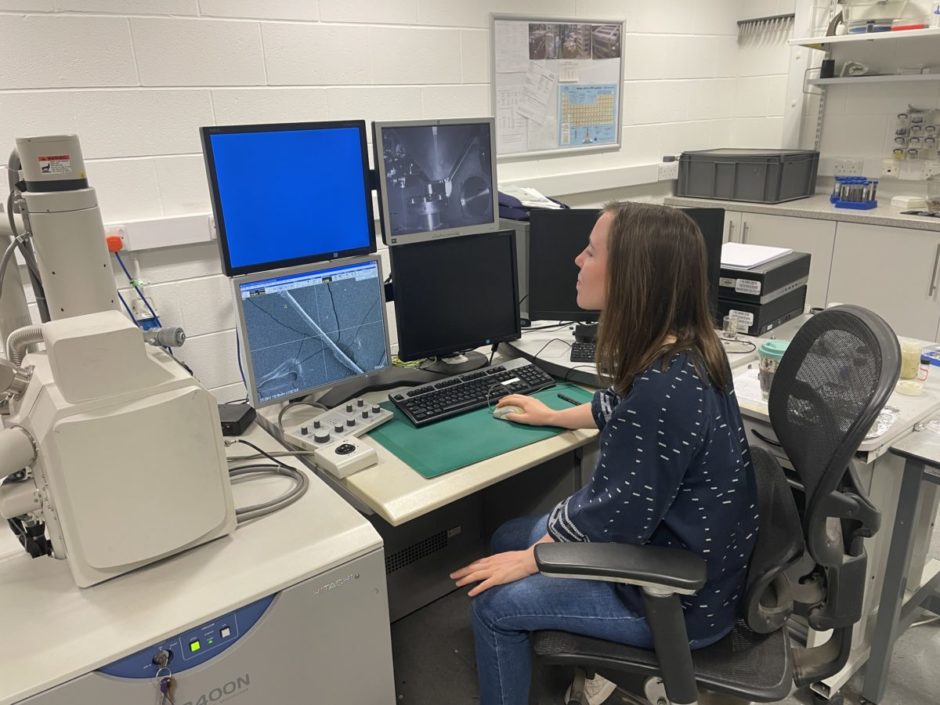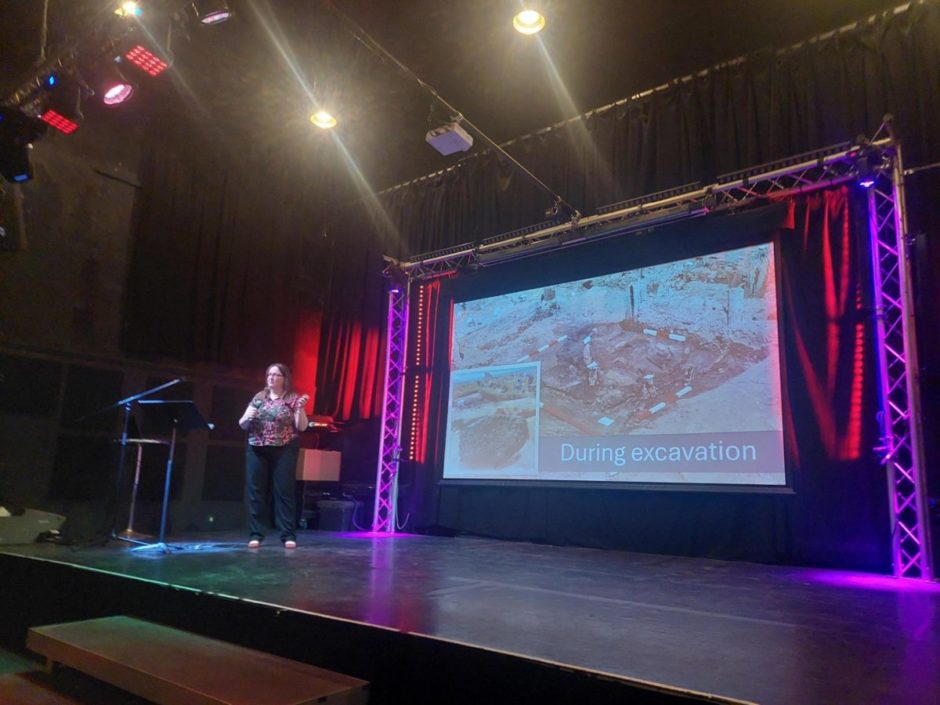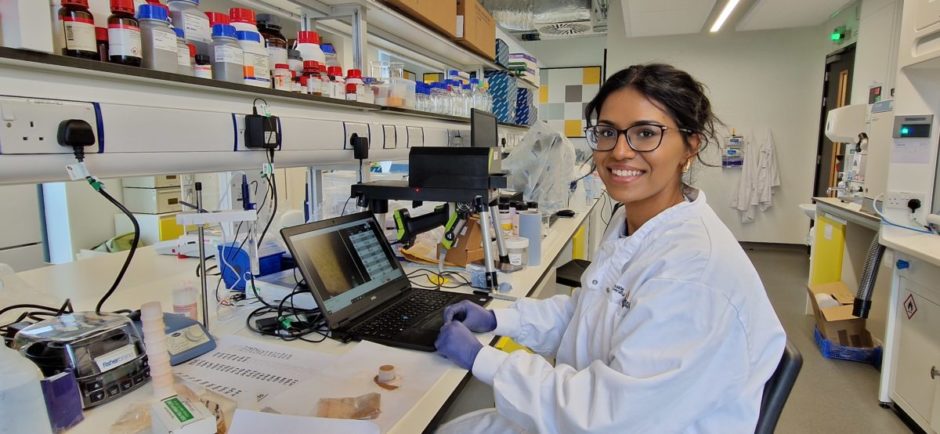Throughout the duration of my internship, I have had the privilege of working on several projects: leather, wool & dye analysis, and recently lace fibre analysis. All the projects relate to or directly are from the Vindolanda Roman archaeological site. It’s thrilling to be a part of a team working to uncover a section of untold history, which is right under our noses.
When I first began my role, I was a little overwhelmed but was welcomed by another intern and Gillian, who made me feel like a part of their team. Initially I started helping the other intern with the leather sample analysis, which helped me to find my feet and was a good introduction to the project. VSC allowed for visualisation of degraded versus intact structures within archaeological samples.
Over on the Darlington campus, NHC building, I worked on the dye analysis part of the project utilising highly sensitive machines such as HPLC and TQOF. Another element of the project which I worked on was imaging the wool samples using the VSC machine, these were put onto a PowerPoint document as another aspect.
For anyone unsure of their next steps after undergraduate study, I cannot recommend enough seeking out an internship as it provides good connections and a flavour of the workspace which you would be going into.















